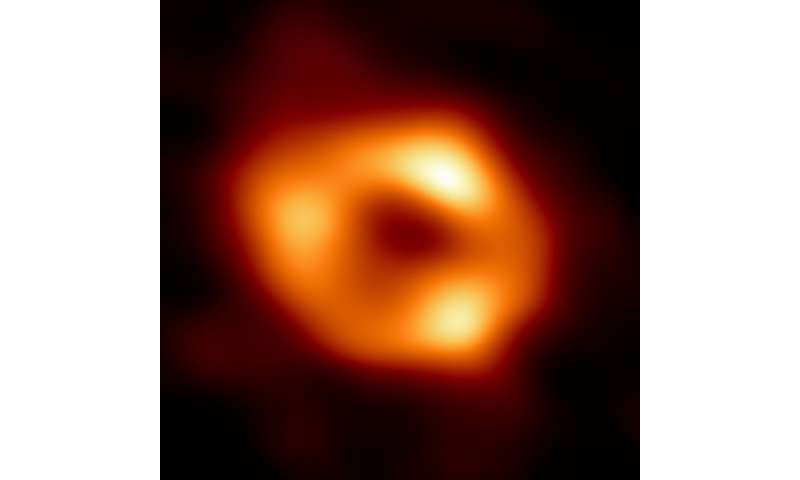Best of Last Week—Milky Way black hole imaged, using AI to stop traffic jams, a bacteriophage to treat infection

It was a good week for space science as a team with the Event Horizon Telescope Collaboration made headlines around the world by revealing the first image of Sagittarius A*, the black hole at the heart of our galaxy. The image provided overwhelming evidence that Sagittarius A* is truly a black hole. Also, a team of researchers at the Chinese Academy of Sciences, working with a colleague from the University of Copenhagen, found evidence that water was present on Mars more recently than previously thought. And a pair of researchers, Michael Wong and Stuart Bartlett, suggested a solution to the Fermi paradox, explaining why aliens have never visited Earth: Superlinear scaling leading to a singularity.
In technology news, a team of engineers at Aston University developed an AI traffic light system that could make traffic jams a distant memory—to reduce congestion, it reads live camera data and adapts to compensate for changes in flow. And an international team of researchers designed and built a reliable and renewable biological photovoltaic cell about the size of the AA battery. The blue-green algae-based cell has been powering a microprocessor continuously for a year. A team at Hong Kong University of Science and Technology developed a thin sensor for computer vision based on a micro lens array. The 5-millimeter-thin array can be used to track movements and changes in real-world environments. And a team with members from Nanyang Technological University, Peking University, Tsinghua University and the Beijing Academy of Quantum Information Sciences developed new transistors that integrate high-k perovskite oxides and 2D semiconductors.
In other news, a team with members from Canada, the U.S., Italy and the Netherlands found that blocking inflammation may lead to chronic pain. Patients experiencing pain who were treated with anti-inflammatory drugs are more likely to develop chronic pain than patients who received other types of pain-relieving drugs. Also, an international team of researchers found that the massive eruption of the Tongan volcano, Hunga, provided an explosion of data on atmospheric waves. And finally, a team of researchers from Brigham and Women's Hospital, the University of Pittsburgh and the University of California San Diego used a single bacteriophage to treat an immunocompromised patient with an antibiotic resistant infection.
© 2022 Science X Network